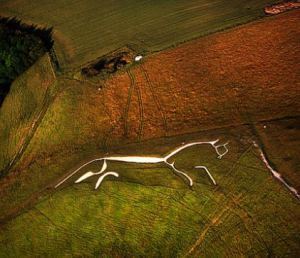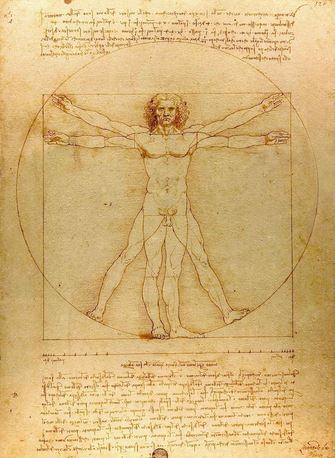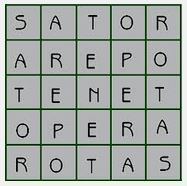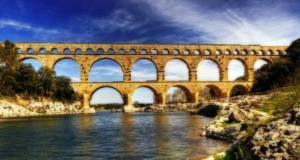Rose Anderson's Blog, page 64
April 27, 2013
The A to Z Challenge – X for Xerxes & Thermoplyae
 I’m participating in the A to Z Challenge for the entire month of April, by posting an interesting topic for each letter of the alphabet. This excludes Sneak Peek Sundays. Follow this link to nearly 2000 other bloggers and authors.
I’m participating in the A to Z Challenge for the entire month of April, by posting an interesting topic for each letter of the alphabet. This excludes Sneak Peek Sundays. Follow this link to nearly 2000 other bloggers and authors.
The A to Z Challenge – participating blogs
Today’s Calliope’s Writing Tablet post is brought to you by the letter X for Xerxes. After his trouncing at Marathon, Darius the Great of Persia raised a huge army intent on returning to Greece to force a different outcome. Unfortunately, an uprising in Egypt needed his immediate attention. In 485 BCE, the law of the land stated if a Persian king went into battle, he must have his affairs in order — namely those essentials like his readied tomb and successor. So before realizing his dream of conquering the Greeks, Darius broke with tradition and chose as his successor a son who wasn’t his first born. He picked Xerxes because Xerxes’ mother Atossa had given her son a powerful bloodline. Darius died shortly after. After quelling various revolts in Egypt, Bactria, and Babylon, Xerxes set his eye on finishing what his father had begun — conquering the Greeks. This would be the famous battle of Thermopylae.
After his trouncing at Marathon, Darius the Great of Persia raised a huge army intent on returning to Greece to force a different outcome. Unfortunately, an uprising in Egypt needed his immediate attention. In 485 BCE, the law of the land stated if a Persian king went into battle, he must have his affairs in order — namely those essentials like his readied tomb and successor. So before realizing his dream of conquering the Greeks, Darius broke with tradition and chose as his successor a son who wasn’t his first born. He picked Xerxes because Xerxes’ mother Atossa had given her son a powerful bloodline. Darius died shortly after. After quelling various revolts in Egypt, Bactria, and Babylon, Xerxes set his eye on finishing what his father had begun — conquering the Greeks. This would be the famous battle of Thermopylae.
Herodotus, the Ancient Greek Historian, and quite possibly the first investigative reporter to write things down, estimated a Persian army one million strong going against at best 5,200-11,200 Greeks. Hollywood would recreate this exhausting futility in the movie 300.
Here are two detailed explanations of what transpired at Thermopylae:
http://academic.reed.edu/humanities/110tech/thermopylae.html
Coming to the end — the letter Y!
I’ve had so much fun discussing my historical posts in the A to Z Challenge. To keep conversations going, I’ve just launched a new blog — a Salon Blog called Another Stone Unturned Pressed for time now that my edits are in progress, I’ve put my Gobekli Tepe post there to reanimate the discussion. Let’s talk about it. What have you found on the web? What stone might still be unturned for interested learners? What can you share? I’d love to see! Read the details and let’s start the ball rolling. http://anotherstoneunturned.blogspot.com/
Rose Anderson ~ Love Waits in Unexpected Places
I’m here…
Main Blog: http://calliopeswritingtablet.com/
there…
Satellite Blogs:
http://calliopeswritingtablet.blogspot.com/
http://calliopesotherwritingtablet.blogspot.com/
http://theancillarymuse.blogspot.com/
http://anotherstoneunturned.blogspot.com/
Static pages:
http://thewitchywolfandthewendigo.blogspot.com/
http://leonardosbookoflove.blogspot.com/?zx=c1927211cb19cf0f
http://roseanderson4858.blog.com/
http://roseandersonromance.weebly.com/
http://roseanderson4858.wix.com/roseanderson–author
…and everywhere!
Amazon: http://www.amazon.com/Rose-Anderson
Pinterest: http://pinterest.com/FollowTheMuse/
Twitter: https://twitter.com/roseanderson_
Tumblr: http://author-roseanderson.tumblr.com/
Youtube: http://www.youtube.com//MusesWritingTablet
Facebook: https://www.facebook.com/rose.anderson
Google+: https://plus.google.com/rose.anderson
About.me: http://about.me/rose_anderson_author
Come say say hi!
Subscribe to this blog for the latest happenings. 
۞>>>>۞<<<<< ۞


April 26, 2013
The A to Z Challenge – W for White Horse of Uffington
 I’m participating in the A to Z Challenge for the entire month of April, by posting an interesting topic for each letter of the alphabet. This excludes Sneak Peek Sundays. Follow this link to nearly 2000 other bloggers and authors.
I’m participating in the A to Z Challenge for the entire month of April, by posting an interesting topic for each letter of the alphabet. This excludes Sneak Peek Sundays. Follow this link to nearly 2000 other bloggers and authors.The A to Z Challenge – participating blogs
Today’s Calliope’s Writing Tablet post is brought to you by the letter W for White Horse of Uffington.
A geoglyph is a large drawing cut into the ground. Figures of all sorts are found worldwide both ancient and modern, and curiously, all were designed to be seen from above. When I think of geoglyphs, the enigmatic Nazca Lines in Peru come to mind — lines and pictures so old no one alive knows their purpose.
Called Hill Figures in Britain, an estimated 57 of these artworks are scattered throughout the UK, but not all are ancient works. The most recent is the Folkestone Horse created in 2003. Horses seem to be a popular theme. In Wiltshire alone, there were eight chalky horses (two have since disappeared). In Aberdeenshire, a horse was cut into quartz, and the Red Horses of Warwickshire were were cut into the red loam. One of the largest and most famous geoglyph is the Cerne Abbas Giant in Britain. Some say he’s a huge fertility symbol, others just call him the Rude Man. Look him up. I’m guessing fertility symbol.
Gouged into the rolling English hillside near the village of Uffington in Oxfordshire, is one of the most famous geoglyphs in the world — the White Horse of Uffington. Experts determine the horse was created around 3000 years ago during the Bronze Age or early Iron Age, in the time of Stonehenge.
Most people see a stylized horse on the run when they consider the white chalk outline, but some feel the original head structure and curvature of the legs represent a large cat…a lion or cougar perhaps. Early references from the local Abbingdon Abbey in 1072 AD, refer to the hillside as Mons Albi Equi or White Equine Hill. That it’s a horse is a long held notion. Given the age of the artwork, it’s all speculation. It looks like a horse to me, so I’ll just call it a horse.
Like the Cerne Abbas Giant, the White Horse of Uffington was created by carving through turf to reveal the white chalk underneath the soil. Since open spaces like this soon fill in with plants and soil, many of the figures scattered across the UK are slowly being covered. The Uffington hillside and the White Horse require regular maintenance to keep it looking its best. To those who know things like this, it’s estimated it would only take 150 years to cover over completely. It makes me wonder what other images are hidden in the grass. Researching this prehistoric artwork, I’m struck by the fact there has been an unbroken chain of people tending it for the last 3000 years. That’s amazing all by itself!
Here’s an interesting clip showing all the Hillside Horses in Great Britain ~
And here’s Google Earth so you can see the rest around the world
http://www.google.com/earth/index.html
I’ve had so much fun discussing my historical posts in the A to Z Challenge. To keep conversations going, I’ve just launched a new blog — a Salon Blog called Another Stone Unturned. Pressed for time now that my edits are in progress, I’ve put my Gobekli Tepe post there to reanimate the discussion. Let’s talk about it. What have you found on the web? What stone might still be unturned for interested learners? What can you share? I’d love to see! Read the details and let’s start the ball rolling. http://anotherstoneunturned.blogspot.com/
 Rose Anderson ~ Love Waits in Unexpected Place
Rose Anderson ~ Love Waits in Unexpected Place
I’m here…
Main Blog:
http://calliopeswritingtablet.com/
there…
Satellite Blogs:
http://calliopeswritingtablet.blogspot.com/
http://calliopesotherwritingtablet.blogspot.com/
http://theancillarymuse.blogspot.com/
http://anotherstoneunturned.blogspot.com/
Static pages:
http://thewitchywolfandthewendigo.blogspot.com/
http://leonardosbookoflove.blogspot.com/?zx=c1927211cb19cf0f
http://roseanderson4858.blog.com/
http://roseandersonromance.weebly.com/
http://roseanderson4858.wix.com/roseanderson–author
…and everywhere!
Amazon: http://www.amazon.com/Rose-Anderson
Pinterest: http://pinterest.com/FollowTheMuse/
Twitter: https://twitter.com/roseanderson_
Tumblr: http://author-roseanderson.tumblr.com/
Youtube: http://www.youtube.com//MusesWritingTablet
Facebook: https://www.facebook.com/rose.anderson
Google+: https://plus.google.com/rose.anderson
About.me: http://about.me/rose_anderson_author
Come say say hi!
Subscribe to this blog for the latest happenings. 
۞>>>>۞<<<<< ۞


April 25, 2013
The A to Z Challenge – V for Vitruvian Man
 I’m participating in the A to Z Challenge for the entire month of April, by posting an interesting topic for each letter of the alphabet. This excludes Sneak Peek Sundays. Follow this link to nearly 2000 other bloggers and authors.
I’m participating in the A to Z Challenge for the entire month of April, by posting an interesting topic for each letter of the alphabet. This excludes Sneak Peek Sundays. Follow this link to nearly 2000 other bloggers and authors.
The A to Z Challenge – participating blogs
Today’s Calliope’s Writing Tablet post is brought to you by the letter V for Vitruvian Man.
In the 1st century BCE, a Roman architect named Marcus Vitruvius wrote about perfect architecture in a book entitled De Architectura. His book was considered the authority on architecture, city planning, and machines. De Architectura was written in cyclopedic sytle – that is one book with many topics (not to be confused with encyclopedic style that has many books on many topics). In one of these sections he discusses the building of temples. This is where the Vitruvian Man is born:
Similarly, in the members of a temple there ought to be the greatest harmony in the symmetrical relations of the different parts to the general magnitude of the whole. Then again, in the human body the central point is naturally the navel. For if a man can be placed flat on his back, with his hands and feet extended, and a pair of compasses centered at his navel, the fingers and toes of his two hands and feet will touch the circumference of a circle described therefrom. And just as the human body yields a circular outline, so too a square figure may be found from it. For if we measure the distance from the soles of the feet to the top of the head, and then apply that measure to the outstretched arms, the breadth will be found to be the same as the height, as in the case of plane surfaces which are completely square.
- Marcus Vitruvius, De Architectura
That’s it, no actual image. It would take 1400 years for someone to intrinsically know what Vitruvius was getting at.
 Vitruvius’ opinions influence architecture even today, but in the Renaissance, e Architectura was extremely popular.As a young man of fifteen, Leonardo da Vinci headed to Florence to work as an apprentice in the distinguished workshop of artist Andrea del Verrocchio. It was there he discovered Vitruvius’ book and was captivated by the architect’s notion that the proportions and measurements of the human body, being divinely created, were perfect and correct, and this perfection could carry over in the architecture of temples. Leonardo was all about symmetry.
Vitruvius’ opinions influence architecture even today, but in the Renaissance, e Architectura was extremely popular.As a young man of fifteen, Leonardo da Vinci headed to Florence to work as an apprentice in the distinguished workshop of artist Andrea del Verrocchio. It was there he discovered Vitruvius’ book and was captivated by the architect’s notion that the proportions and measurements of the human body, being divinely created, were perfect and correct, and this perfection could carry over in the architecture of temples. Leonardo was all about symmetry.
Guided by Vitruvius’ description of perfection as it related to man, Leonardo da Vinci encapsulated, in one distinct and commanding image, the ideas of divine human proportion and symmetry.
Many believe his Vitruvian Man is an analogy for the workings of the universe.
I’m fascinated by Leonardo d Vinci (notice my book covers). What an amazing man.
I’ve had so much fun discussing my historical posts in the A to Z Challenge. To keep conversations going, I’ve just launched a new blog — a Salon Blog called Another Stone Unturned Pressed for time now that my edits are in progress, I’ve put my Gobekli Tepe post there to reanimate the discussion. Let’s talk about it. What have you found on the web? What stone might still be unturned for interested learners? What can you share? I’d love to see! Read the details and let’s start the ball rolling. http://anotherstoneunturned.blogspot.com/
Rose Anderson ~ Love Waits in Unexpected Places
I’m here…
Main Blog:
http://calliopeswritingtablet.com/
there…
Satellite Blogs:
http://calliopeswritingtablet.blogspot.com/
http://calliopesotherwritingtablet.blogspot.com/
http://theancillarymuse.blogspot.com/
http://anotherstoneunturned.blogspot.com/
Static pages:
http://thewitchywolfandthewendigo.blogspot.com/
http://leonardosbookoflove.blogspot.com/?zx=c1927211cb19cf0f
http://roseanderson4858.blog.com/
http://roseandersonromance.weebly.com/
http://roseanderson4858.wix.com/roseanderson–author
…and everywhere!
Amazon: http://www.amazon.com/Rose-Anderson
Pinterest: http://pinterest.com/FollowTheMuse/
Twitter: https://twitter.com/roseanderson_
Tumblr: http://author-roseanderson.tumblr.com/
Youtube: http://www.youtube.com//MusesWritingTablet
Facebook: https://www.facebook.com/rose.anderson
Google+: https://plus.google.com/rose.anderson
About.me: http://about.me/rose_anderson_author
Come say say hi!
Subscribe to this blog for the latest happenings. 
۞>>>>۞<<<<< ۞


April 24, 2013
The A to Z Challenge – U for Underground City
 I’m participating in the A to Z Challenge for the entire month of April, by posting an interesting topic for each letter of the alphabet. This excludes Sneak Peek Sundays. Follow this link to nearly 2000 other bloggers and authors.
I’m participating in the A to Z Challenge for the entire month of April, by posting an interesting topic for each letter of the alphabet. This excludes Sneak Peek Sundays. Follow this link to nearly 2000 other bloggers and authors.
The A to Z Challenge – participating blogs
Today’s Calliope’s Writing Tablet post is brought to you by the letter U for Underground City.
While researching Turkey for my huge unfinished series affectionately referred to as my magnum opus (See details in previous posts), I came upon Cappadocia. Turkey stirs my imagination for various reasons, but none so much as the underground cities of Cappadocia. Reminiscent of the tunnels and chambers found in an anthill, the cities were dug from the soft volcanic rock in the 8th–7th centuries B.C.E. It’s estimated there are more than 200 subterranean cities scattered across the land, some as deep as 280 feet below ground with ventilation chimneys and wells tapped into underground water placed at various levels throughout. Some cities are connected by tunnels.
Warm in winter and cool in summer, every living space imaginable for man and beast in the city was carved out of the rock – kitchens, wine cellars, store rooms for grain and cribs for hay, meeting rooms, and toilets. All the cities had locking stones which could be opened and closed only from inside against outside threats. The largest city of Derinkuyu was massive enough to shelter 20,000 people and their livestock. As far as Turkish tourism goes, Derinkuyu currently has 8 levels open to the public, with as many as 12 more levels yet to be excavated. And there may be more than that. I’d love to see it.
The following video from the History Channel shows the tunnel system.
Ignore the parts about extraterrestrials. 
I’ll save that for the next A to Z Challenge!
I’ve had so much fun discussing my historical posts in the A to Z Challenge. To keep conversations going, I’ve just launched a new blog — a Salon Blog called Another Stone Unturned Pressed for time now that my edits are in progress, I’ve put my Gobekli Tepe post there to reanimate the discussion. Let’s talk about it. What have you found on the web? What stone might still be unturned for interested learners? What can you share? I’d love to see! Read the details and let’s start the ball rolling. http://anotherstoneunturned.blogspot.com/
Rose Anderson ~ Love Waits in Unexpected Places
I’m here…
Main Blog:
http://calliopeswritingtablet.com/
there…
Satellite Blogs:
http://calliopeswritingtablet.blogspot.com/
http://calliopesotherwritingtablet.blogspot.com/
http://theancillarymuse.blogspot.com/
http://anotherstoneunturned.blogspot.com/
Static pages:
http://thewitchywolfandthewendigo.blogspot.com/
http://leonardosbookoflove.blogspot.com/?zx=c1927211cb19cf0f
http://roseanderson4858.blog.com/
http://roseandersonromance.weebly.com/
http://roseanderson4858.wix.com/roseanderson–author
…and everywhere!
Amazon: http://www.amazon.com/Rose-Anderson
Pinterest: http://pinterest.com/FollowTheMuse/
Twitter: https://twitter.com/roseanderson_
Tumblr: http://author-roseanderson.tumblr.com/
Youtube: http://www.youtube.com//MusesWritingTablet
Facebook: https://www.facebook.com/rose.anderson
Google+: https://plus.google.com/rose.anderson
About.me: http://about.me/rose_anderson_author
Come say say hi!
Subscribe to this blog for the latest happenings. 
۞>>>>۞<<<<< ۞


April 23, 2013
The A to Z Challenge – T for Tollund Man
 I’m participating in the A to Z Challenge for the entire month of April, by posting an interesting topic for each letter of the alphabet. This excludes Sneak Peek Sundays. Follow this link to nearly 2000 other bloggers and authors.
I’m participating in the A to Z Challenge for the entire month of April, by posting an interesting topic for each letter of the alphabet. This excludes Sneak Peek Sundays. Follow this link to nearly 2000 other bloggers and authors.
The A to Z Challenge – participating blogs
Today’s Calliope’s Writing Tablet post is brought to you by the letter T for Tollund Man.
In 1950, peat cutters in Denmark uncovered a man’s body in a bog. From the look of it, it was a recent death. The police were called and to everyone surprise, the body was actually more than 2000 years old. What’s more, this was a human sacrifice. He’s not the only bog body found in the peat bogs of Denmark, Germany, Holland, Britain, and Ireland. There are a number of them actually. Estimates range as high as 700. Most of the bodies were placed in the bogs during the European Iron Age and in the Roman period, between about 800 BC and AD 200. The oldest bog body was found in Denmark — the Koelbjerg Woman. Estimates dates her to about 1000 AD.
Peat, also known as turf, is the compressed partially decayed vegetation found in bogs. Think of it like coal that isn’t quite finished forming. Peat’s highly acidic nature and the fact that it’s oxygen-poor, means these bog bodies are generally very well-preserved — even their clothing and skin.
More fascinating information here
http://www.tollundman.dk/
And… a terrific interactive here
http://www.pbs.org/wgbh/nova/ancient/tolland-man.html
I’ve had so much fun discussing my historical posts in the A to Z Challenge. To keep conversations going, I’ve just launched a new blog — a Salon Blog called Another Stone Unturned Pressed for time now that my edits are in progress, I’ve put my Gobekli Tepe post there to reanimate the discussion. Let’s talk about it. What have you found on the web? What stone might still be unturned for interested learners? What can you share? I’d love to see! Read the details and let’s start the ball rolling. http://anotherstoneunturned.blogspot.com/
Rose Anderson ~ Love Waits in Unexpected Places
I’m here…
Main Blog:
http://calliopeswritingtablet.com/
there…
Satellite Blogs:
http://calliopeswritingtablet.blogspot.com/
http://calliopesotherwritingtablet.blogspot.com/
http://theancillarymuse.blogspot.com/
http://anotherstoneunturned.blogspot.com/
Static pages:
http://thewitchywolfandthewendigo.blogspot.com/
http://leonardosbookoflove.blogspot.com/?zx=c1927211cb19cf0f
http://roseanderson4858.blog.com/
http://roseandersonromance.weebly.com/
http://roseanderson4858.wix.com/roseanderson–author
…and everywhere!
Amazon: http://www.amazon.com/Rose-Anderson
Pinterest: http://pinterest.com/FollowTheMuse/
Twitter: https://twitter.com/roseanderson_
Tumblr: http://author-roseanderson.tumblr.com/
Youtube: http://www.youtube.com//MusesWritingTablet
Facebook: https://www.facebook.com/rose.anderson
Google+: https://plus.google.com/rose.anderson
About.me: http://about.me/rose_anderson_author
Come say say hi!
Subscribe to this blog for the latest happenings. 
۞>>>>۞<<<<< ۞


April 21, 2013
The A to Z Challenge – S for Sator Square
 I’m participating in the A to Z Challenge for the entire month of April, by posting an interesting topic for each letter of the alphabet. This excludes Sneak Peek Sundays. Follow this link to nearly 2000 other bloggers and authors. My monday is extremely busy, so I’m posting early. Enjoy!
I’m participating in the A to Z Challenge for the entire month of April, by posting an interesting topic for each letter of the alphabet. This excludes Sneak Peek Sundays. Follow this link to nearly 2000 other bloggers and authors. My monday is extremely busy, so I’m posting early. Enjoy!
The A to Z Challenge – participating blogs
Today’s Calliope’s Writing Tablet post is brought to you by the letter S — Sator Square.
Mount Vesuvius erupted in 79AD and buried Herculaneum and Pompeii under tons of pyroclastic ash and debris. Excavations occurred centuries later and revealed the embellished splendor of that ancient world. A curious thing was found scrawled graffiti-style on a Pompeian wall – a Sator Square. This Latin palindrome is written in a square so the words may be read top-to-bottom, bottom-to-top, left-to-right, and right-to-left.
The Square was used throughout the Roman Empire that stretched all the way to ancient Britain. It was also found in France, Portugal, Syria, and Egypt. Some examples were written on papyri and parchment, and date from the fourth or fifth century. In this form it was carried as an amulet.
There has been a lot of speculation on this weird collection of words…everything from it being a secret Satanic or Templar code, to a secret sign of recognition exchanged between Christians during periods of persecution. Some have attributed magical properties to it because it’s a four times palindrome and palindromes were viewed as being immune to tampering by the devil. Others believe the Sator Square’s origins is Mithraic (Ancient Mystery Religion)
Translated from Latin, here are the meanings of four of the words:
Sator = sower or planter
tenet = he holds
opera = works
rotas = wheels
The Arepo is a person’s name, perhaps added to complete the square. People who ponder such things take the meaning like so:
The sower Arepo holds and works the wheel. This might be interpreted as Arepo leads the plough. Perhaps that makes it a talisman of good luck for a bountiful harvest.
Is this just fun with words – a palindromic Sally sells seashells by the seashore? Is it a way to tap those devils or was it code to avoid persecution? We may never know. The writer in me thinks the Sator Square is far more than meets the eye.
I’ve had so much fun discussing my historical posts in the A to Z Challenge. To keep conversations going, I’ve just launched a new blog — a Salon Blog called Another Stone Unturned Pressed for time now that my edits are in progress, I’ve put my Gobekli Tepe post there to reanimate the discussion. Let’s talk about it. What have you found on the web? What stone might still be unturned for interested learners? What can you share? I’d love to see! Read the details and let’s start the ball rolling. http://anotherstoneunturned.blogspot.com/
Rose Anderson ~ Love Waits in Unexpected Places
I’m here…
Main Blog:
http://calliopeswritingtablet.com/
there…
Satellite Blogs:
http://calliopeswritingtablet.blogspot.com/
http://calliopesotherwritingtablet.blogspot.com/
http://theancillarymuse.blogspot.com/
http://anotherstoneunturned.blogspot.com/
Static pages:
http://thewitchywolfandthewendigo.blogspot.com/
http://leonardosbookoflove.blogspot.com/?zx=c1927211cb19cf0f
http://roseanderson4858.blog.com/
http://roseandersonromance.weebly.com/
http://roseanderson4858.wix.com/roseanderson–author
…and everywhere!
Amazon: http://www.amazon.com/Rose-Anderson
Pinterest: http://pinterest.com/FollowTheMuse/
Twitter: https://twitter.com/roseanderson_
Tumblr: http://author-roseanderson.tumblr.com/
Youtube: http://www.youtube.com//MusesWritingTablet
Facebook: https://www.facebook.com/rose.anderson
Google+: https://plus.google.com/rose.anderson
About.me: http://about.me/rose_anderson_author
Come say say hi!
Subscribe to this blog for the latest happenings. 
۞>>>>۞<<<<< ۞


It’s Sneak Peek Sunday!
 It’s
Sneak Peek Sunday!
It’s
Sneak Peek Sunday!
Here’s my Sneak Peek from
The Witchy Wolf and the Wendigo (book 2 Eluwilussit)
Setting the Stage: Anticipating the inevitable confrontation with Eli (Eluwilussit), Ash takes Livie to the reservation to John’s family to keep her out of harm’s way. Seeing the friendship between Ash and John, Uncle Abbie and Aunt May make a decision to adopt Ash into their family.
Jo and John nodded. Seeing that, Cora guessed what was coming and nodded too.
Abbie continued, “Ash, I know you are Nooke. John has said this. As you already know, my family is Makwa. The bear is your doodem, and is our totem as well. As descendants of Nooke we are from the same people the Miigis sent west from the sea. In the old days our family name was Miskobagizi. Today, we use the Anglo form, RedLeaf. We would give your people back to you, Ash. May and I would make you our son, if you would agree. Your name would be Ash RedLeaf. You would be one of us, one of our family.”
Overcome with emotion, Ash could not speak. Forcing his voice, it sounded raw when he stood and asked forgiveness for leaving them. Alarmed, Livie made to follow, but May laid a hand upon her arm and said with a gentle smile. “Leave him be for now, Livie. A man’s heart can only take so much at one time. He will return.”
Ash stood on the wooden porch and held his palms to the sky in thanks for this wondrous gift. He needed to think. Taking a deep breath, he drew inward. His clothing fell away as his body took the form of a Peregrine falcon, the fastest member of the animal kingdom. Quick as a shot, he flew straight up into the air. There in the wide empty sky, his mind spoke with his heart. He had not had family since he was nine winters old. Of course, he’d remained part of his clan, but still a child alone without family. And here in this new world, these special people offered their family to him. He wanted this, he wanted family again. But the sad truth was, until Eluwilussit was dead, all he could offer in return was danger.
He tumbled into a turn and at 200 miles per hour hurled his aerodynamic body toward the ground. He and Livie were lovers and she might conceive a child as a result, his child. If Eluwilussit managed to kill him, the child would need family to raise him. The child would be a RedLeaf. He would belong to the Makwa, the bear people of the Nooke. The bear clan would look after his child, as they had looked after the orphan he had been.
He broke his fall at the last moment and landed lightly on top of his clothes. Returning to his human body, he dressed quickly, then went inside to the table. With his palms held up before him, he bowed his head to Abbie and May. “Father and Mother, I would be honored to be your son.”
۞>>>>۞<<<<۞

I’m participating in the A to Z Challenge. For 26 days in April and excluding Sundays (which I’ll be using for the Sneak Peek), I’ll write a post for each letter of the alphabet. Follow this link on the banner above to nearly 2000 other bloggers and authors.
Scroll down to catch up on letters A to L, I have some fascinating topics posted, if I do say so myself!
Monday, letter S!
۞>>>>۞<<<<۞
Rose Anderson – Love Waits in Unexpected Places
BUY eBOOKS & PAPERBACK | TWITTER | GOOGLE+
TUMBLR | PINTEREST | FACEBOOK
۞>>>>۞<<<<۞
۞>>>>۞<<<<۞


April 20, 2013
The A to Z Challenge – R for Repetition
 I’m participating in the A to Z Challenge for the entire month of April, by posting an interesting topic for each letter of the alphabet. This excludes Sneak Peek Sundays. Follow this link to nearly 2000 other bloggers and authors.
I’m participating in the A to Z Challenge for the entire month of April, by posting an interesting topic for each letter of the alphabet. This excludes Sneak Peek Sundays. Follow this link to nearly 2000 other bloggers and authors.
The A to Z Challenge – participating blogs
Today’s Calliope’s Writing Tablet post is brought to you by the letter R — R for Repetition.
I offer a picture post of repetition. Several days ago, I posted Fibonacci and Fractals for letter F. This post adds to that mathematical curiosity. Why do patterns repeat? We see this repetition everywhere. Take spirals, for example. It’s said that spirals take the least amount of energy to produce. From the whorl on a baby’s scalp, to the spiral galaxies in the vast universe, to our own DNA strands, spirals are our reminders that we’re at once unique and mundane.
Then we have the tessellations. From the Latin tessellātus, it means mosaic. Off the top of my head I give you a few: honeycombs, fish scales, giraffe spots, turtle shells, pineapples, reptile skin, tidal pools, and Giants Causeway in Ireland.
From here I could go into polygons and pentagons (seen in flower petal arrangements). I could discuss the fact the number 3 and 5 repeat in the natural world. I could also touch upon symmetry and how humans are attracted to it. No, too much info will make this post too large. I’ll save those for another day. 
Here’s a well done and cute explanation in three videos. I love the rapid-fire delivery.
And this one is incredible
<><><><><>
I’ve had so much fun discussing my historical posts in the A to Z Challenge. To keep conversations going, I’ve just launched a new blog — a Salon Blog called Another Stone Unturned Pressed for time now that my edits are in progress, I’ve put my Gobekli Tepe post there to reanimate the discussion. Let’s talk about it. What have you found on the web? What stone might still be unturned for interested learners? What can you share? I’d love to see! Read the details and let’s start the ball rolling. http://anotherstoneunturned.blogspot.com/
Rose Anderson ~ Love Waits in Unexpected Places
I’m here…
Main Blog:
http://calliopeswritingtablet.com/
there…
Satellite Blogs:
http://calliopeswritingtablet.blogspot.com/
http://calliopesotherwritingtablet.blogspot.com/
http://theancillarymuse.blogspot.com/
http://anotherstoneunturned.blogspot.com/
Static pages:
http://thewitchywolfandthewendigo.blogspot.com/
http://leonardosbookoflove.blogspot.com/?zx=c1927211cb19cf0f
http://roseanderson4858.blog.com/
http://roseandersonromance.weebly.com/
http://roseanderson4858.wix.com/roseanderson–author
…and everywhere!
Amazon: http://www.amazon.com/Rose-Anderson
Pinterest: http://pinterest.com/FollowTheMuse/
Twitter: https://twitter.com/roseanderson_
Tumblr: http://author-roseanderson.tumblr.com/
Youtube: http://www.youtube.com//MusesWritingTablet
Facebook: https://www.facebook.com/rose.anderson
Google+: https://plus.google.com/rose.anderson
About.me: http://about.me/rose_anderson_author
Come say say hi!
Subscribe to this blog for the latest happenings. 
۞>>>>۞<<<<< ۞


April 18, 2013
The A to Z Challenge – Q for Qi
 I’m participating in the A to Z Challenge for the entire month of April, by posting an interesting topic for each letter of the alphabet. This excludes Sneak Peek Sundays. Follow this link to nearly 2000 other bloggers and authors.
I’m participating in the A to Z Challenge for the entire month of April, by posting an interesting topic for each letter of the alphabet. This excludes Sneak Peek Sundays. Follow this link to nearly 2000 other bloggers and authors.
The A to Z Challenge – participating blogs
Today’s Calliope’s Writing Tablet post is brought to you by the letter Q — Q for Qi
“Everything in Life is Vibration”
– Albert Einstein
 I had a marvelous physics teacher once who so captured my imagination, he set the ground work for my interest in Reiki as well as for my magnum opus (scroll back to previous posts to learn more.) I remember him holding a glass of water and telling us there was very little difference in the two. Oh sure, one was mostly made of silica (SiO2) the other (H2O) was made of hydrogen and oxygen, but that’s chemistry and not what he was getting at.
I had a marvelous physics teacher once who so captured my imagination, he set the ground work for my interest in Reiki as well as for my magnum opus (scroll back to previous posts to learn more.) I remember him holding a glass of water and telling us there was very little difference in the two. Oh sure, one was mostly made of silica (SiO2) the other (H2O) was made of hydrogen and oxygen, but that’s chemistry and not what he was getting at.
In Physics, the big difference between the two was how the molecules moved. The molecules of the glass vibrated slowly, and because of that, the glass was hard. The water molecules were in high-speed motion and because of that, the water was fluid. If he had held a cup of steam, they’d be faster still. What was the force that moved water and glass at a molecular, atomic and sub-atomic level? We know it as molecular vibration. Living things also vibrate.
To those who study it, this vibration is referred to as life energy. Hippocrates, the well-known physician of Ancient Greece, called it the healing power of nature. The 16th-century alchemist Paracelsus called it Archaeus – the luminous, radiating healing energy that surrounds and permeates the body.
The concept of a life force has been around for thousands of years and spans the globe.
Here are a few examples:
The Lakota refer to this force as ni.
The Navajo call it nilch’i.
In Africa it’s known as Ashe.
Hawaiians call it Mana.
To the Egyptians, this was Sekem.
The Hindus refer to this life force as Prana.
The Ancient Greeks called it Pneuma or Thymos.
In China this is Chi, the life force strengthened by such focused activities as Tai Chi and Qigong. In Japan, it’s called Qi. Qi is life-force which animates the living forms of the world. What is it exactly? I suppose the best way to describe it is, it’s the vibratory phenomena that flows from, and surrounds all, living things.
To Luke Skywalker, this is the Force.
Here’s an interesting clip from Bill Moyers.
It’s clear he doesn’t know what to think of Qi.
Here’s an interesting albeit simple explanation of Reiki
<><><><><>
I’ve had so much fun discussing my historical posts in the A to Z Challenge. To keep conversations going, I’ve just launched a new blog — a Salon Blog called Another Stone Unturned Pressed for time now that my edits are in progress, I’ve put my Gobekli Tepe post there to reanimate the discussion. Let’s talk about it. What have you found on the web? What stone might still be unturned for interested learners? What can you share? I’d love to see! Read the details and let’s start the ball rolling. http://anotherstoneunturned.blogspot.com/
Rose Anderson ~ Love Waits in Unexpected Places
I’m here…
Main Blog:
http://calliopeswritingtablet.com/
there…
Satellite Blogs:
http://calliopeswritingtablet.blogspot.com/
http://calliopesotherwritingtablet.blogspot.com/
http://theancillarymuse.blogspot.com/
http://anotherstoneunturned.blogspot.com/
Static pages:
http://thewitchywolfandthewendigo.blogspot.com/
http://leonardosbookoflove.blogspot.com/?zx=c1927211cb19cf0f
http://roseanderson4858.blog.com/
http://roseandersonromance.weebly.com/
http://roseanderson4858.wix.com/roseanderson–author
…and everywhere!
Amazon: http://www.amazon.com/Rose-Anderson
Pinterest: http://pinterest.com/FollowTheMuse/
Twitter: https://twitter.com/roseanderson_
Tumblr: http://author-roseanderson.tumblr.com/
Youtube: http://www.youtube.com//MusesWritingTablet
Facebook: https://www.facebook.com/rose.anderson
Google+: https://plus.google.com/rose.anderson
About.me: http://about.me/rose_anderson_author
Come say say hi!
Subscribe to this blog for the latest happenings. 
۞>>>>۞<<<<< ۞


The A to Z Challenge – P for Pont du Gard
 I’m participating in the A to Z Challenge for the entire month of April, by posting an interesting topic for each letter of the alphabet. This excludes Sneak Peek Sundays. Follow this link to nearly 2000 other bloggers and authors.
I’m participating in the A to Z Challenge for the entire month of April, by posting an interesting topic for each letter of the alphabet. This excludes Sneak Peek Sundays. Follow this link to nearly 2000 other bloggers and authors.
The A to Z Challenge – participating blogs
Today’s Calliope’s Writing Tablet post is brought to you by the letter P — P for Pont du Gard.
While researching my magnum opus (scroll to previous posts to learn what that is), I came upon an amazing work of  Roman engineering – the Pont du Gard or Bridge of the Gard. Comprised of 54,000 tons of stone, with some blocks weighing up to 6 tons each, the Pont du Gard was built by the Roman Empire between 40 and 60 AD, this aqueduct is 900’ long, 160’ high, and was just over 31 miles long. Like so many of the lasting ancient constructions, it was built without mortar with precisely cut stone. The weight of the arches folding in on themselves works with gravity to hold it all together. It’s considered to be Roman masonry at its finest example.
Roman engineering – the Pont du Gard or Bridge of the Gard. Comprised of 54,000 tons of stone, with some blocks weighing up to 6 tons each, the Pont du Gard was built by the Roman Empire between 40 and 60 AD, this aqueduct is 900’ long, 160’ high, and was just over 31 miles long. Like so many of the lasting ancient constructions, it was built without mortar with precisely cut stone. The weight of the arches folding in on themselves works with gravity to hold it all together. It’s considered to be Roman masonry at its finest example.
Designed to transport clean water from freshwater hillside springs across the Gard River to Nîmes, the aqueduct was built with a slight sloping grade to help the spring water along. An analysis of the intact remains determined when the aqueduct was working in full swing, it transported up to 100 gallons per second, or around 50 million gallons of water per day, and provided water to homes, fountains, spas, and sewage lines. Undeniably genius.
In the mid-1800’s, the Pont du Gard received much needed repairs under Napoleon III. Since then floods have damaged the site. Because of its architectural and cultural value, it was deemed a World Heritage Site and added to UNESCO in 1985 (the United Nations Educational, Scientific and Cultural Organization) It continues to be maintained for the future.
The UNESCO List
http://whc.unesco.org/en/list/
Here’s a fabulous interactive site for the Pont du Gard Aqueduct that puts you right on top. (it’s a little like Google Earth)
http://www.pontdugard.fr/en/ancient-work-art
The history of Dry Stone (mortarless) Construction
http://www.drystone.org/history/
This video must be watched on youtube. Click the link offered.
<><><><><>
>>>I’m over at my satellite blog http://calliopeswritingtablet.blogspot.com/ Today is the last day in the Authors in Bloom Blog Hop. Stop by. One more chance for prizes!
Rose Anderson ~ Love Waits in Unexpected Places
I’m here…
Main Blog:
http://calliopeswritingtablet.com/
there…
Satellite Blogs:
http://calliopeswritingtablet.blogspot.com/
http://calliopesotherwritingtablet.blogspot.com/
http://theancillarymuse.blogspot.com/
http://anotherstoneunturned.blogspot.com/
Static pages:
http://thewitchywolfandthewendigo.blogspot.com/
http://leonardosbookoflove.blogspot.com/?zx=c1927211cb19cf0f
http://roseanderson4858.blog.com/
http://roseandersonromance.weebly.com/
http://roseanderson4858.wix.com/roseanderson–author
…and everywhere!
Amazon: http://www.amazon.com/Rose-Anderson
Pinterest: http://pinterest.com/FollowTheMuse/
Twitter: https://twitter.com/roseanderson_
Tumblr: http://author-roseanderson.tumblr.com/
Youtube: http://www.youtube.com//MusesWritingTablet
Facebook: https://www.facebook.com/rose.anderson
Google+: https://plus.google.com/rose.anderson
About.me: http://about.me/rose_anderson_author
Come say say hi!
Subscribe to this blog for the latest happenings. 
۞>>>>۞<<<<< ۞















